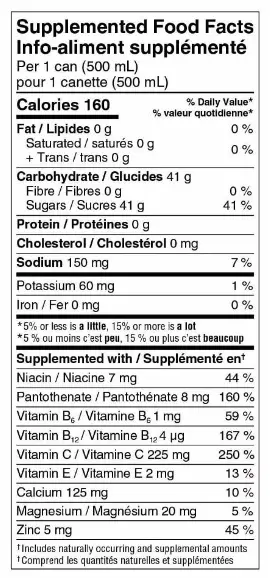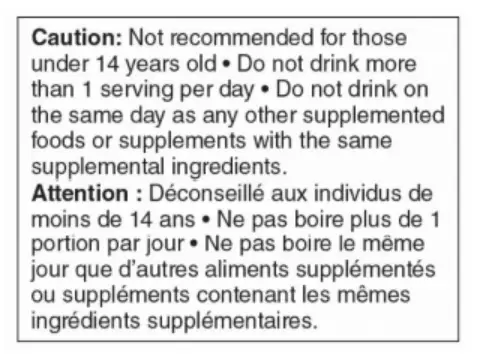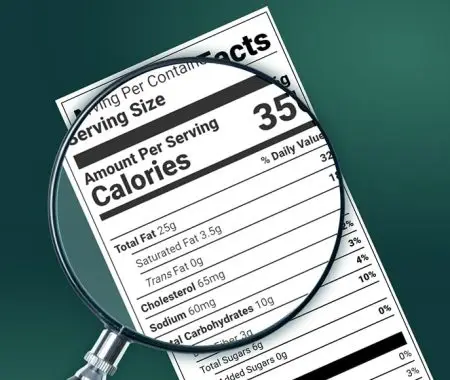Canada has recently updated its rules on supplemented foods, which are foods that have been modified or that have added ingredients that claim to promote certain health benefits or nutritional value. This is in response to changing consumer preferences and the increasing popularity of functional foods for better nutritional health. The Canadian Food Inspection Agency (CFIA) enforces these regulations to make sure that products are safe and that they are properly labeled. For businesses entering into or expanding in the Canadian market, understanding these new regulations is essential because your food products need to comply with the law and meet consumer expectations at the same time.
This article will explore the nuances of the new supplemented foods regulations and guide businesses struggling to navigate these changes. It will also cover the definitions and importance of supplemented foods, how businesses can transition from Temporary Marketing Authorization Letters (TMALs), and the essential compliance steps for these businesses in the food and beverage sector.
TLDR
- New Regulations Overview: Health Canada and the CFIA have updated the Food and Drug Regulations (FDR) and the Cannabis Regulations to better regulate supplemented foods, focusing on stricter and clearer labeling standards and consumer safety.
- Documents for Compliance: Four critical documents have been incorporated into the FDR to define standards and requirements for supplemented foods, including guidelines for labeling, permitted food categories, and allowable supplemental ingredients.
- Definition of Supplemented Foods: These are foods with added ingredients like vitamins or caffeine, designed to provide health benefits beyond basic nutrition.
- Eligibility and Restrictions: Only certain food types can be supplemented, such as protein bars and fruit drinks. Foods not eligible include infant foods, foods for children under four, and foods for pregnant or breastfeeding women, among others.
- Regulatory Goals: These regulations keep consumers safe by ensuring that supplemented foods do what they claim and that food labels are clear so consumers understand what they are buying and eating. Additionally, these rules encourage food companies to come up with new and innovative products in a safe way.
- The Transition from TMALs to Full Compliance: Businesses previously operating under Temporary Marketing Authorization Letters must update their practices to fully comply with the new regulations by December 31, 2025.
- Key Compliance Steps for Businesses: Includes adding a Supplemented Food Facts Table to labels, including necessary cautionary statements, grouping these statements under a clear “Caution” heading, and displaying a Supplemented Food Caution Identifier on the product packaging.
Understanding the New Supplemented Foods Regulations
Health Canada and the CFIA have implemented important amendments to the Food and Drug Regulations (FDR) and the Cannabis Regulations. These changes target supplemented foods and the corresponding labeling standards that need to be followed.
These supplemented foods regulations in Canada have two objectives. They aim to protect consumers’ health and safety and to establish a clear, predictable regulatory landscape for businesses that are involved in the production and sale of supplemented foods.
As a part of these regulations, four key documents have been incorporated and specify the standards and requirements for supplemented foods. Here’s a brief overview of these documents:
- Directory of supplemented food caution identifier specifications
- Includes tables that show how to properly format warning labels on packaged foods. It details what these labels should look like, what information they need to include, and the design standards they must meet.
- Directory of supplemented food facts table formats
- Provides a list of different acceptable layouts for nutritional information tables on packaged foods. It shows examples, explains what must be included in these tables, and describes how the information should be organized and displayed.
- List of permitted supplemented food categories
- Specifies which types of foods can be classified as supplemented foods. If a food type isn’t on this list, it’s not considered a supplemented food.
- List of permitted supplemental ingredients
- Lists all the ingredients that can be added to supplemented foods and the rules for using them. These rules cover which types of food can include the ingredient, the maximum amount that can be added, any warning statements needed on the label, and other specific labeling requirements.
See How FoodLabelMaker Can Help You
What Are Supplemented Foods?
Defined under the new regulations, supplemented foods are foods that are specifically formulated and that contain added ingredients that typically do not occur naturally in these foods. Examples include things like caffeinated drinks or energy bars.
These supplemented foods have vitamins, minerals, herbal extracts, and other dietary substances added to them that are meant to offer health benefits beyond basic nutrition. Supplemented foods are also different from conventional foods, which are consumed mostly for taste and nutritional value without having to add any extra ingredients to them. It also differs from fortified foods, which are enhanced with nutrients that are naturally found in the food but are added in greater amounts than what is already contained in the food itself. Supplemented foods also vary from natural health products, which are usually sold in doses like pills or tinctures and are used mostly for medicinal purposes.
Only specific types of foods are allowed to be supplemented. As we briefly mentioned, these are:
- Protein or energy bars
- Fruit drinks or juices
- Carbonated water-based beverages
Additionally, certain types of foods cannot be supplemented. These are:
- Infant foods
- Foods meant for children under 4 years old
- Foods for pregnant or breastfeeding individuals
- Alcoholic beverages
- Foods for special dietary use
- Prepackaged unprocessed foods or minimally processed foods
- Most foods required or permitted to have nutrients added for fortification purposes like milk and breakfast cereals, for example.
These products are not allowed to be supplemented because you need to apply other regulatory guidelines to them and they pose a higher risk if they are consumed, especially for vulnerable groups like expecting mothers and young children. Please refer to the four documents we linked earlier for more of an extensive list of the food types that are allowed to and not allowed to be supplemented.
Goals of the Supplemented Foods Regulations
The Supplemented Foods Regulations in Canada aim to protect public health by making sure that foods with added ingredients like vitamins or herbal extracts are safe to consume. This is why there are such strict guidelines for businesses and manufacturers regarding food production, what ingredients are allowed to be included, and how the products are labeled.
The CFIA and Health Canada want consumers to be able to clearly distinguish between supplemented foods and normal foods with natural ingredients just by looking at the package labeling. This allows them to make more informed decisions when it comes to their health, and to be aware of the risks associated with consuming supplemented foods.
Additionally, supplemented foods promote innovation within the food industry as manufacturers are encouraged to develop new products that meet the specific health desires of consumers. Yet the regulations are put in place to ensure that any added health benefits are backed up by science and won’t harm anyone if they consume such a product.
Transitioning from TMALs to Full Compliance
The shift from Temporary Marketing Authorization Letters (TMALs) to full compliance with the Supplemented Foods Regulations is a crucial step for businesses in the food industry. TMALs were temporary permissions that allowed products to be sold before the full regulations took effect. Now, businesses must transition to full compliance by a set deadline to avoid any penalties. Here’s a more detailed guide:
- Necessary Actions: Businesses must update their product labels, formulations, and any relevant documentation to comply with the new standards. This includes things like checking if their supplemental ingredients and food categories are allowed under the new regulations.
- These two documents can serve as a guide for you to check where your products fall under this transition period:
- Lists of Temporary Marketing Authorization Letters (TMALs): This shows a list of all the foods that received a TMAL as supplemented foods. These foods are given a period during which they must update their practices and products to comply with the new regulations fully.
- Threshold Levels for Cautionary Statements and Other Conditions of Use: This document details the specific requirements that a food must meet to continue being sold after the new regulations start.
- Timelines: It’s important to start the transition process early so that you have enough time to make any necessary changes. Companies have until December 31, 2025, to complete this transition.
Key Compliance Steps for Businesses
For businesses that are new to the food and beverage industry, especially those who are producing supplemented foods, these regulatory requirements can be difficult to navigate and get right. Here’s a step-by-step guide to help you when it comes to labeling requirements for supplemented foods:
- Include a Supplemented Food Facts Table (SFFt):
- Display the heading “Supplemented Food Facts” prominently.
- List core nutrients with the same requirements as in the regular Nutrition Facts table.
- Under “Supplemented with,” show the total amount of each supplemental ingredient that has been added to the food.
- Add Cautionary Statements When Necessary:
- Include cautionary warnings on labels if the product contains ingredients that could be harmful when consumed in large amounts or by vulnerable groups.
- Examples of required statements could be:
- “Not recommended for those under 14 years old.”
- “Do not consume more than X serving(s) per day.”
- If zinc is an added ingredient, there must be a cautionary statement
- You only need to display each warning once if multiple ingredients require the same caution.
- Group Cautionary Statements:
- Place all cautionary statements under a bolded heading labeled “Caution” to make them easy to notice.
- This grouping mirrors the format used for listing ingredients on prepackaged foods.
- Display a Supplemented Food Caution Identifier:
- If the product has cautionary statements, you must place a caution identifier on the front panel of the product packaging.
- This identifier alerts consumers to check the cautionary information so that they can determine if the food is suitable for their consumption.
By following these steps and guidelines, businesses can ensure they meet all the regulatory requirements for supplemented foods, thereby protecting consumer health and avoiding legal issues. Refer to this Health Canada article on Supplemented Food Labels for more detailed information on how to label your products accordingly.
FAQs
What is the new law on supplements in Canada?
The new law in Canada regarding supplements has been implemented by the Canadian Food Inspection Agency (CFIA) and Health Canada. Supplemented foods are food products that have added nutrients, ingredients, or herbal extracts that are not naturally found in that food product.
These supplemented foods need to be clearly marked on food labels and packaging, while following a specific set of guidelines set by the regulatory bodies. This is to make consumers aware of these added ingredients and the potential health risks associated with consuming them. Businesses must have applied these new regulations to their supplemented food products by no later than December 2025.
What does the Supplemented Health Canada warning mean?
The Supplemented Health Canada warning on food labels is a heads-up about the added ingredients in supplemented foods, such as vitamins or caffeine, which could be risky if too much is consumed or if certain groups such as children or pregnant women have them. This warning is there to help you see these additions and then decide if the product is safe for you to consume.






